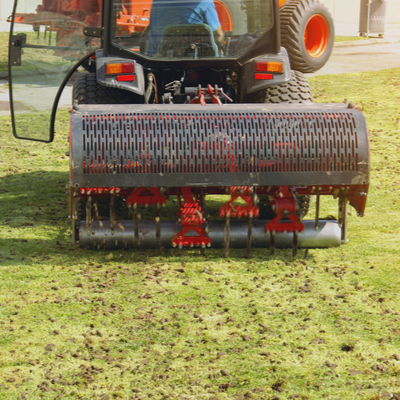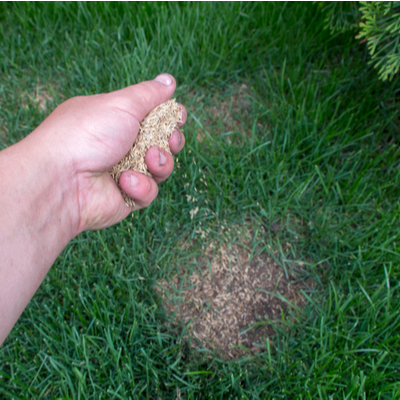It’s Time To Aerate!
Spring is the time to get your yard prepped for the summer, so it’s ready to withstand hot temperatures, heavy rains, and weeds. To set your yard up for success, schedule an aeration treatment. 
What is Core Aeration?
Ohio summers are a delight after the harsh Midwest winters. And what better way to enjoy summer than in a backyard paradise? Unfortunately, heavy foot traffic from graduations, weddings, barbecues, and get-togethers can cause compacted soil. Compacted soil is a lawn condition that prevents water and air from getting to the roots of your grass. Aeration, also called core aeration, can solve this problem by pulling up small plugs of sod and loosening up the soil. After your grass can breathe and drink again, you will notice it return to its former lushness and then some.
Signs of Compacted Soil
Before you choose to get your yard aerated, you must first determine if your soil is compact. Symptoms of compact soil include:
- Water running off and pooling in low areas.
- Weak or yellowing grass.
- Turf that feels spongy when you walk on it.
- Hard soil that is not easy to dig into.
Thatch Buildup
Thatch also can contribute and even make soil compaction worse. Thatch is the name given to the layer of organic material between the dirt and your grass. As it collects over time, it can act as a barrier to prevent water from penetrating.
When To Aerate Your Lawn
Aeration is a scientific process that needs to be properly timed to coincide with your grass’s growing season. If it is done while your grass is dormant, it will give weeds a chance to take over. There are two types of grasses; cool-season and warm-season grasses. Knowing what type of grass you have and when it grows will help you determine when to aerate your lawn.
Cool-season grasses are adapted to the United States’ colder climates and grow during early spring and fall. During the summer, they go semi-dormant during long dry spells. Common cool-season grasses used in Ohio include Kentucky bluegrass, rough bluegrass, perennial ryegrass, fescues, and bentgrass. Early spring and early fall, the two transition periods of the year, are ideal times to aerate cool-season grasses. 
Warm-season grasses are grasses adapted to warmer climates of the United States and do their growing during hot summers. They go dormant during late fall, winter, and early spring. Aerate in late spring through early summer if you have warm-season grasses.
Overseeding Your Lawn
Overseeding is another beneficial process that is usually performed in conjunction with aeration. This is because your yard is full of holes and ready for sewing. Overseeding adds other types of grass seeds to your existing lawn. By mixing different species of grasses, you can make your turf more resilient to pests, diseases, and drought. It’s a great way to add thickness to thinning patches of grass or repair bare patches.
Where We Service
We currently service these locations and more!
To learn more or to schedule an appointment, give us a call today at 937-949-8199, or you can leave us a message online. And don’t forget to check out our blog page and Facebook for more helpful articles, photos of work, and the latest deals.
